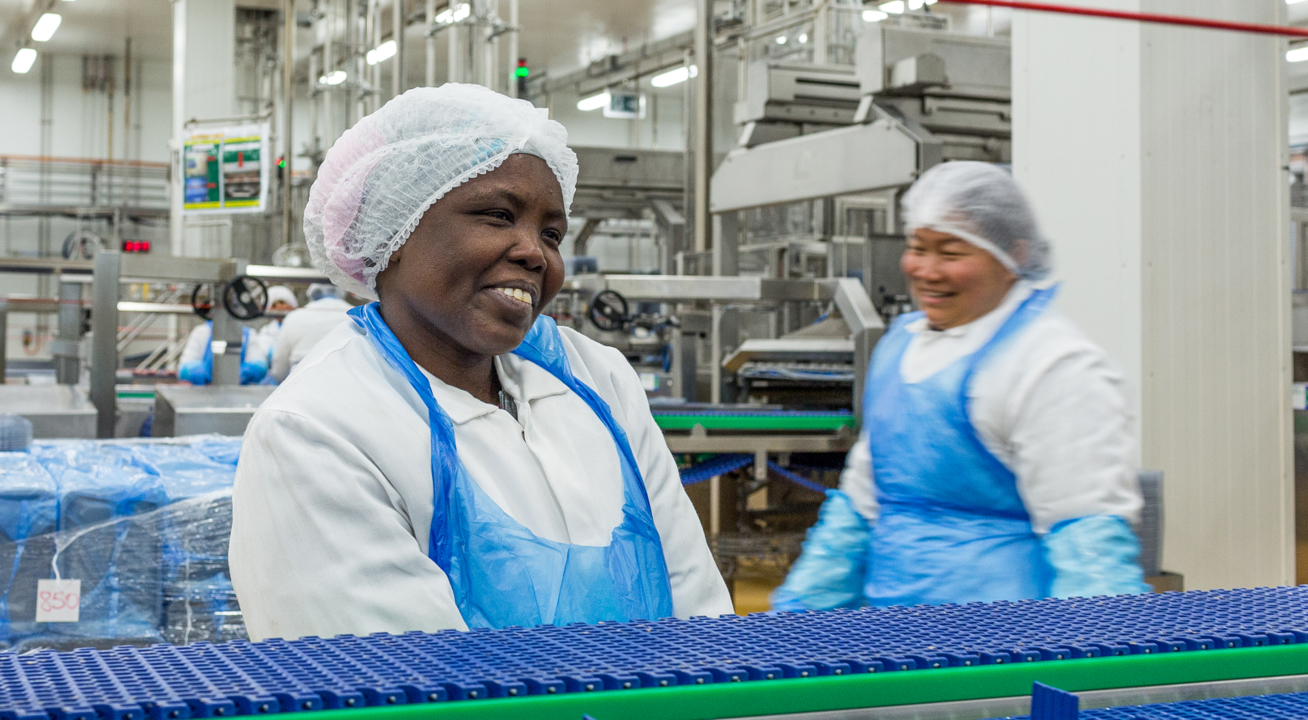The post-pandemic food industry has changed dramatically—and so has its workforce. From restaurants and cafes to food manufacturers and service operators, businesses are facing an uphill battle when it comes to hiring.
Widespread labour shortages, rising wage expectations, burnout, and high turnover have left many employers struggling to fill roles, let alone retain great people. Meanwhile, the competition for skilled and enthusiastic team members has intensified. In 2025, hiring in the food industry isn’t just about filling vacancies—it’s about building resilient, future-ready teams that drive business performance and consistency.
This guide shares up-to-date strategies for food industry hiring—from writing better job ads and choosing the right platforms to retention techniques that actually work. Whether you’re an HR professional, restaurant manager or food manufacturing operator, these best practices are designed to help you attract, engage, and keep the industry’s top talent.
Common hiring challenges in the food industry
Food businesses across the supply chain share several hiring challenges:
- High turnover: Particularly in food service and hospitality, where seasonal work, burnout, and career mobility result in rapid staff churn.
- Skills gaps: Candidates often lack either the hard technical skills needed in food production or the customer-facing finesse required in restaurant roles.
- Shortage of applicants: Many operators report fewer applications for roles post-COVID, with increased demand for flexibility and job security.
- Intense competition: Larger chains or global manufacturers can offer higher wages, benefits, or development programs that small businesses struggle to match.
Each sector experiences these challenges differently:
- Restaurants require front-of-house team members with personality, multitasking abilities, and resilience under pressure.
- Food service operators need staff who can work variable shifts and understand food safety and prep procedures.
- Food manufacturers seek reliable workers with strong attention to detail, experience with machinery or automation, and willingness to work on production lines.
These unique demands mean there’s no one-size-fits-all solution—but there are proven strategies that work across the board.
Effective strategies for attracting top talent
To compete in today’s market, your hiring strategy must be as appealing as your menu or product line. Here’s what works:
Write compelling job ads
- Go beyond tasks—showcase what makes your team worth joining.
- Highlight career development, stability, team culture, and values.
- Include benefits like free meals, uniforms, flexible hours, or transport subsidies.
Offer competitive and transparent pay
- Be upfront about wages to avoid wasting time for both parties.
- Consider performance bonuses, weekend shift premiums, or referral rewards.
- Review wages regularly to stay competitive.
Use food industry-specific recruitment platforms
- Skip the generic job boards when possible.
- Platforms like Harri, Caterer.com, and Culinary Agents are tailored to food and hospitality roles, attracting more relevant candidates.
Leverage referrals and internal networks
- Current staff can be your best recruiters—offer incentives for successful referrals.
- Engage past employees who left on good terms—they may be open to returning.
Build a strong employer brand
- Share behind-the-scenes photos and team stories on social media.
- Use your website and socials to highlight staff achievements, diversity, and purpose.
- Glassdoor and Indeed reviews matter—encourage happy staff to share feedback.
These tactics help ensure your vacancies aren’t just filled—they’re filled with people who fit your values and want to stay.
Restaurant hiring best practices
Restaurant environments are fast-paced and people-driven—so hiring strategies need to focus on personality and team fit as much as experience.
Screen for soft skills
- Look for communication, teamwork, multitasking, and stress management.
- Use scenario-based interview questions (e.g. “What would you do if a customer complained about slow service?”).
Use on-the-spot interviews or trial shifts
- Conduct short walk-in interviews during quieter times to speed up hiring.
- Offer paid trial shifts so you can assess how a candidate handles real service.
Prioritise potential over experience
- Don’t discount someone without restaurant experience if they’re enthusiastic, presentable, and eager to learn.
- With the right onboarding and support, you can shape them into a great team member.
Keep it fast and simple
- Streamline the application process—long forms can turn off good candidates.
- Respond quickly to applicants—top talent won’t wait long for a reply.
Restaurants thrive on strong, service-oriented teams—so your hiring process so your hiring process should be designed to find (and keep) people who love the pace, energy, and customer connection.
Food service recruitment in a digital world
Digital hiring tools are no longer optional—they’re essential for hiring in the food industry in 2025.
Social media recruitment
- Promote job openings on Instagram, Facebook, and LinkedIn.
- Share videos and team content that give potential hires a feel for your brand.
Use hiring apps and job boards tailored to hospitality
- Platforms like Harri, Indeed Flex, and even WhatsApp can speed up communication.
- Pre-screen candidates with short forms or video submissions.
Streamline hiring with automation
- Use automated responses and scheduling tools to keep applicants informed.
- Set up e-forms and digital contracts to reduce paperwork and time delays.
Support remote onboarding
- Share e-learning modules for food safety, compliance, and brand values.
- Offer virtual introductions to team leaders and expectations before the first shift.
Digital tools not only make hiring faster—they also reflect the professionalism and structure that top candidates are looking for.
Strategies to improve staff retention
Hiring is only half the battle—keeping great people is where the real savings and stability come in.
Offer flexible scheduling
- Many staff leave due to burnout or family conflicts.
- Provide advance rosters, honour time-off requests, and consider job sharing.
Invest in employee wellbeing
- Offer staff meals, mental health support, or fitness partnerships.
- Create an environment where concerns can be raised without fear.
Show clear career progression
- Provide pathways for advancement, whether into supervisor roles, specialist areas (like pastry or quality control), or cross-training in new departments.
Prioritise training and upskilling
- Regular training improves performance, safety, and engagement.
- Offer short courses, certifications, or even in-house mentorship programs.
Celebrate wins and show appreciation
- Recognise staff publicly—birthdays, great customer reviews, years of service.
- Run monthly awards, team lunches, or fun competitions.
A strong culture of growth, recognition, and care builds loyalty and reduces recruitment pressures over time. Retention is your most powerful hiring strategy.
Building a stronger food industry workforce
The food industry has never faced a more complex hiring environment—but with the right strategies, it’s also an opportunity to build better teams.
By refining how you attract, recruit, and retain talent, you can turn staffing challenges into competitive strengths. Focus on clear, engaging job ads, use the right platforms, invest in your employer brand, and nurture staff once they’re on board.
Whether you manage a restaurant, food service operation or manufacturing facility, success starts with people. Proactive, modern hiring strategies are the foundation of a productive, reliable, and loyal workforce.
Looking for your next opportunity? At Foods Connected, we're passionate about building future-ready teams too. If you're looking for a rewarding career in a growing company that's transforming the food industry, check out our latest job opportunities.

Caitlin Arthurs
Caitlin Arthurs is a Marketing Executive at Foods Connected, specialising in content creation, SEO, and digital strategy. She works closely with industry experts to produce insightful articles, case studies, and resources that help food businesses optimise their operations and stay ahead of regulatory changes. When she’s not crafting content, Caitlin enjoys graphic design, travelling, and spending time with her golden retriever, Spencer.
Stay up to date
Stay up to date
Browse Posts
- December 2025
- November 2025
- October 2025
- September 2025
- August 2025
- July 2025
- June 2025
- May 2025
- April 2025
- March 2025
- February 2025
- January 2025
- December 2024
- November 2024
- October 2024
- September 2024
- August 2024
- July 2024
- June 2024
- May 2024
- April 2024
- March 2024
- February 2024
- January 2024
- December 2023
- November 2023
- October 2023
- September 2023
- August 2023
- July 2023
- June 2023
- May 2023
- April 2023
- March 2023
- December 2022
- November 2022
- October 2022
- September 2022
- August 2022
- July 2022
- June 2022
- May 2022
- April 2022
- March 2022
- February 2022
- January 2022
- December 2021
- November 2021
- October 2021
- August 2021
/Blog%20Headers/Hiring%20Strategies.jpg)

/Blog%20Headers/shutterstock_1927957907%20(1).jpg)
/Blog%20Headers/shutterstock_1845178195%20(2).jpg)
/Blog%20Headers/shutterstock_2473376713.jpg)
/Blog%20Headers/shutterstock_2133827717%20(1).jpg)
/Blog%20Headers/shutterstock_2247276303.jpg)
.png)
.png)




/Blog%20Headers/Blog%20header_Supply%20Chain%20Resilience%20Series_Navigating%20trade%20tensions.jpg)
/Blog%20Headers/New%20Calorie%20Labelling%20Regulations%20in%20England%20What%20Will%20it%20Mean%20for%20your%20Business.jpg)


.jpg)
/Blog%20Headers/Whitbread%20CS%20Blog%20Header.jpg)
/Blog%20Headers/shutterstock_2329797865.jpg)

